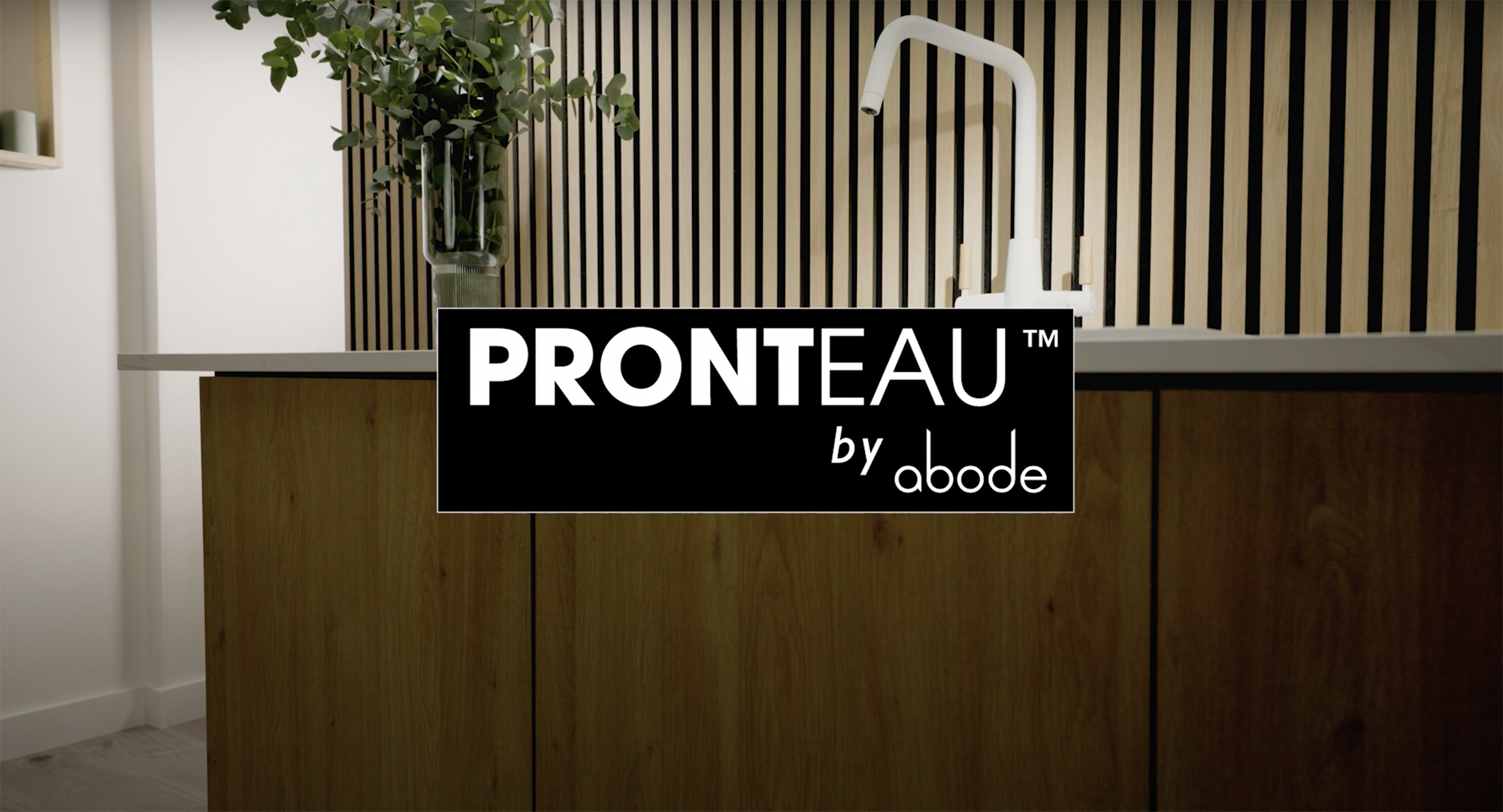As the dominance of the chrome towel warmer is challenged in design-led schemes, shifting consumer expectations will see finishes, shapes and technology playing a larger role in radiators and heating.
With the fluid landscape of the modern world, certain products can become neglected or unwanted, but radiators remain vitally relevant to bathroom and kitchen design.
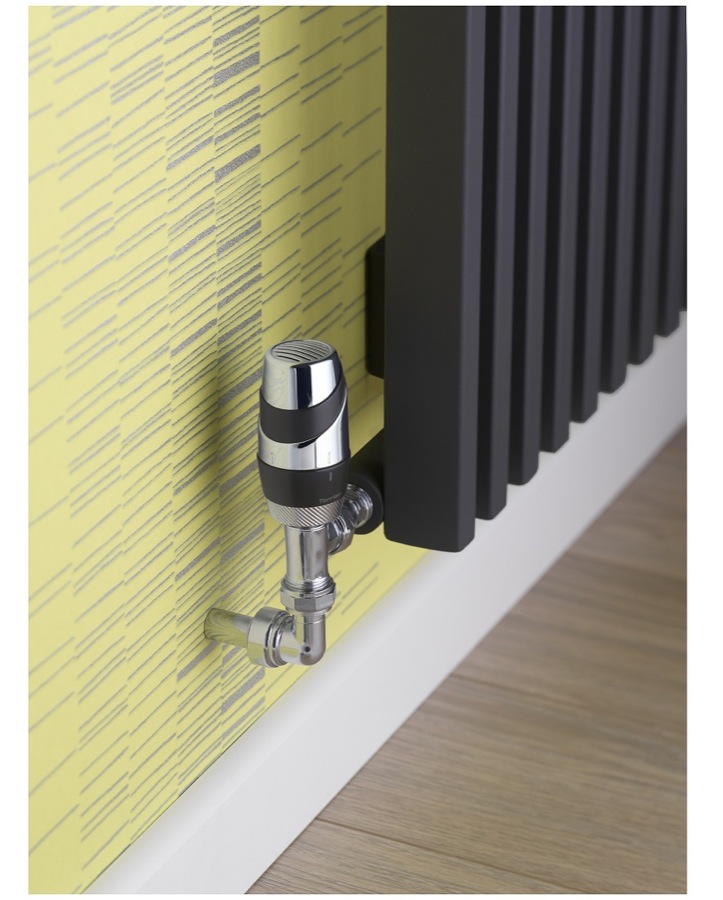
Decor Thermostatic Radiator Valves from Pegler Yorkshire come in Angle Pattern and Straight Pattern TRVs, which can be vertically or horizontally mounted. They come in a choice of finishes, including Anthracite and White
We reported last year that from 2014-2018, radiator sales had grown 18%, and they continue to see a steady increase. This upward trend shows no signs of halting any time soon, especially with the number of home improvements expected to increase over the next couple of years.
Sponsored Video
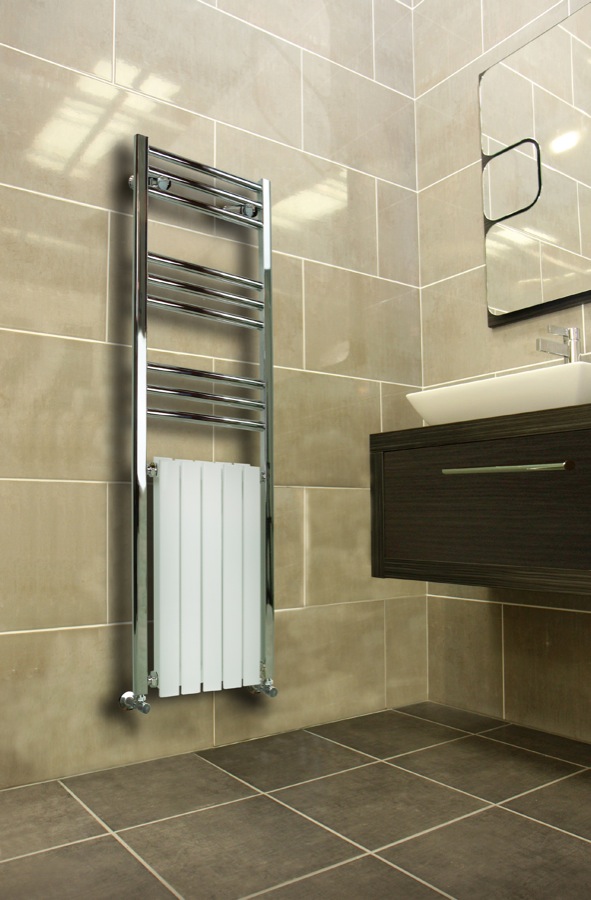
Harmonique‘s multi-rail design means it can be used for heating a room and drying towels. It is available in four models, can be finished in any RAL colour, and comes with a 10-year guarantee from Vogue (UK)
Radiator sales are predominantly led by the replacement market, which operations manager for MHS Radiators Alex Bradley says is beneficial for the forthcoming year: “With the housing market experiencing a subdued start to 2018, there is a general feeling that homeowners are choosing to ‘renew rather than move’.
“This bodes well for the radiator market, with many households deciding to upgrade old or unattractive models with more design-led alternatives.” It’s great news for kitchen and bathroom designers and specifiers who work in the refurbishment sector.
Black on Track
Chrome ladder rails have long been king of the bathroom, and while there will always be a place for this model, there has been a noticeable move away from this as a standard choice.
A shift towards alternative designs has largely been informed by the change in demand surrounding brassware finishes. As such, matt black has proven to be increasingly popular as people target bold, on-trend finishes.
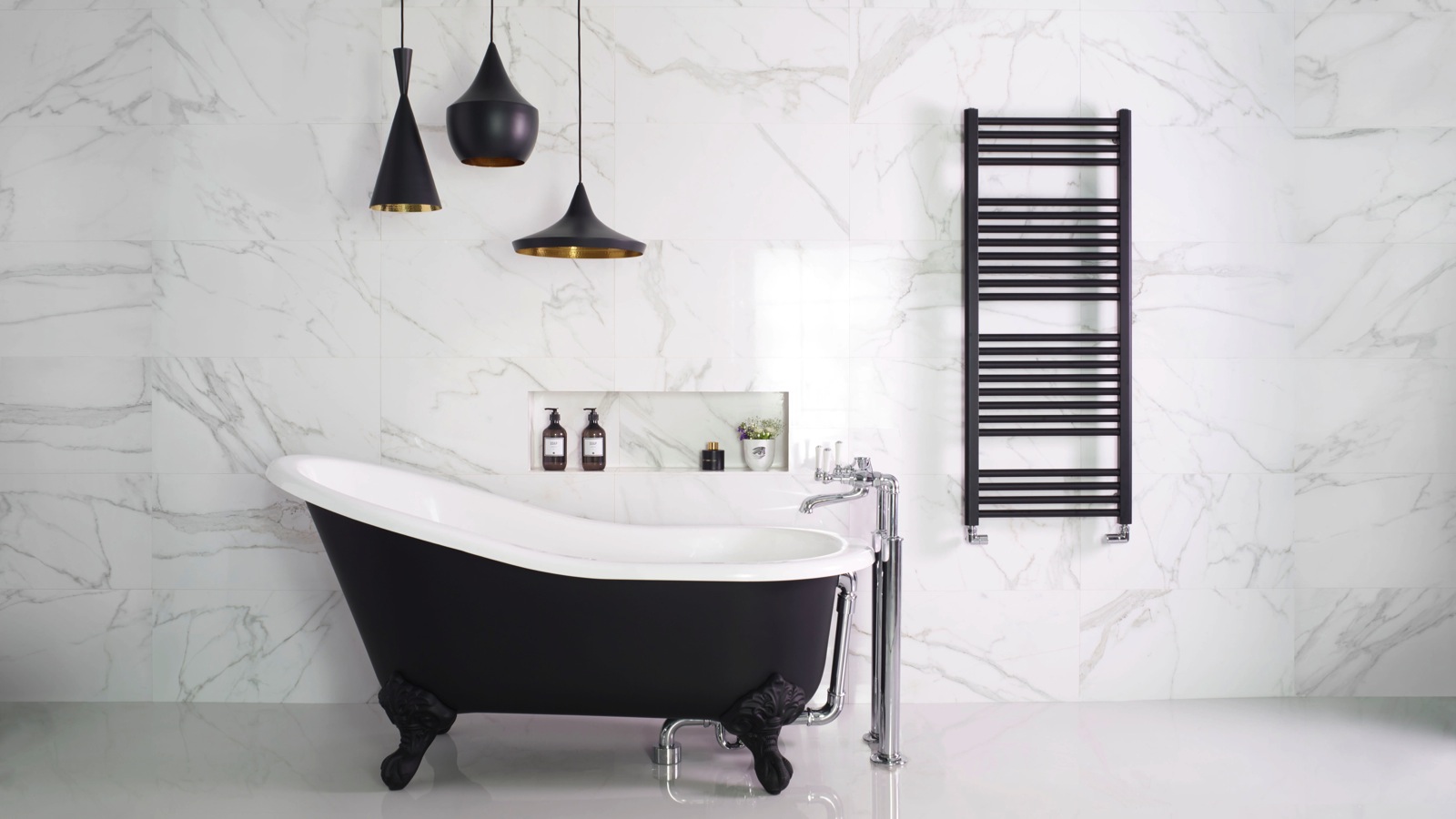
Extending the finish options of its Deline towel rail, Bisque Radiators has introduced a matt black version. It has a hidden air vent, as well as brackets mounted on the back of the towel rail, allowing towels to hang freely
Mark Hickman, southern divisional sales manager at Vasco Group, points out how consumer tastes are changing, as they demand more than go-to chrome radiators for contemporary interiors: “We have seen an increase in demand from customers looking for something that complements the bathroom in terms of shape, colour and texture, we see this trend increasing.”
And this view is reiterated by MHS Radiators which reports Nina is its most popular towel rail due to its wide variety of finishes, while the popularity of Multisec is because of the range of heights and widths available.
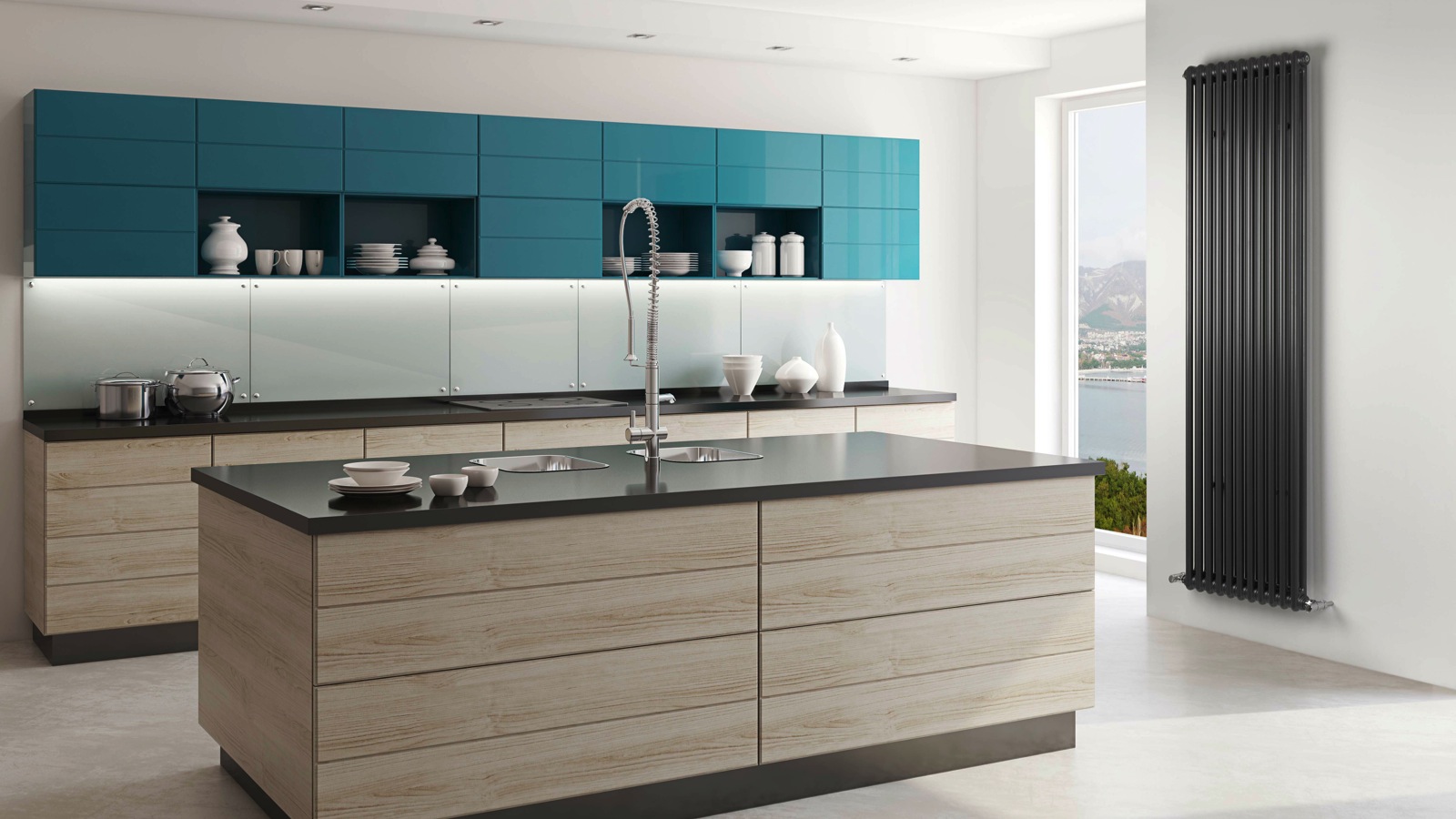
The Multisec from MHS Radiators features a column design and is available in a choice of two to six columns in a variety of heights. It comes in wall-mounted and floor-mounted versions, with a choice of slip-on or cast feet
However, just because there have been changes to finishes, it doesn’t mean the traditional towel rail has been entirely discarded. Ellie Sawdy, marketing executive of Zehnder UK which owns Bisque, argues its “Classic Towel rail is always a favourite.”
Functional and fashionable
The reason why towel rails have been at the forefront of sales is practicality; they are not only able to heat a room, but also provide warm towels.
The requirement of functionality has seen the variety of heating sources expand to offer sizes to suit all spaces, and even use redundant areas of the bathroom.
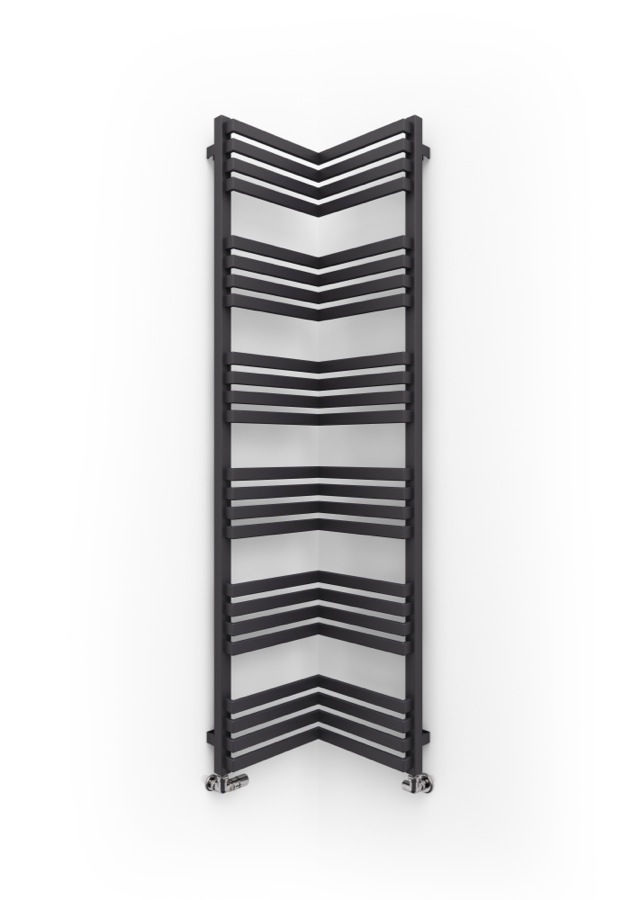
As its name suggests, the Incorner Designer Towel Rail from Frontline Bathrooms uses wall corners to utilise space and comes in a choice of two sizes. It is available in a powder-coated grey finish and can be used with angled radiator valves
Michael Sammon, sales and marketing director of Frontline Bathrooms, explains: “Our brand new Incorner and Outcorner models cleverly utilise the corners of bathroom walls to use space more effectively, while our dual function Holborn heated washstand incorporates a basin and towel rail into one space-saving product.”
Future is Green
While the present appears infatuated with shapes, finishes and textures, the future should see a far more concerted effort towards producing greener technology.
Consumers are becoming increasingly considerate of the environmental implications of the products they purchase, signalled by the fastest-growing products at many companies having efficiency at the forefront of their design.
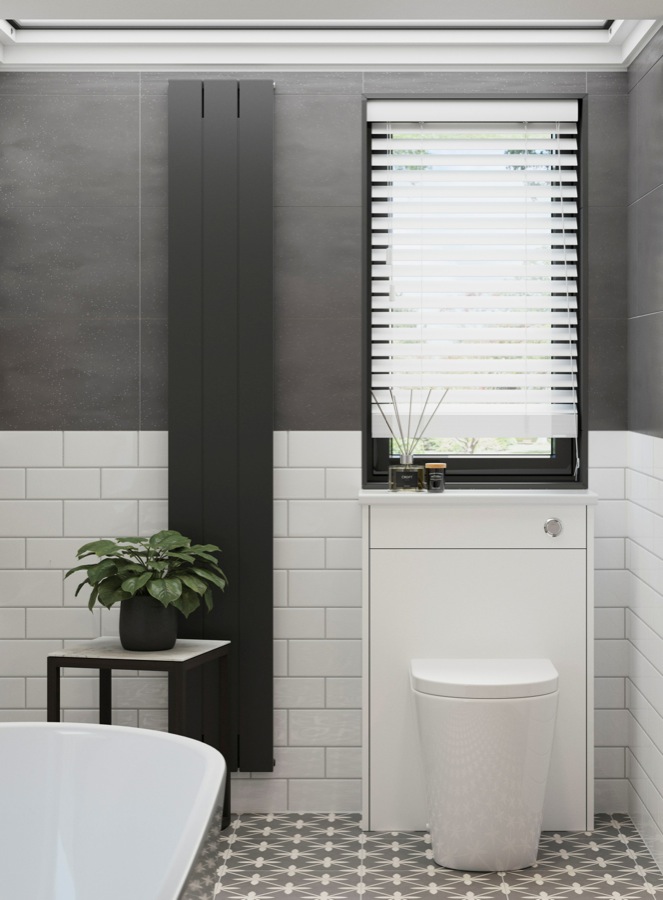
The AluLite from PJH is made from aluminium, which reportedly warms a room faster, doesn’t rust and is eco-friendly as the material is recyclable. It has a heat output of 2337 BTU and is available in black or white
Ellie Sawdy agrees, as she sees a similar trend with Bisque’s fastest-growing radiator: “Decoral is highly efficient, thanks to its low water content and high output – which makes it suitable for use with renewable heating technology, such as heat pumps.”
Mark Hickman of the Vasco Group echoes this sentiment: “The ONI is currently seeing an increase in sales; this radiator is extremely energy efficient, using only half a litre of water and heats up immediately. The ONI has excellent ‘green’ credentials too, as it is made from 100% recycled aluminium.”
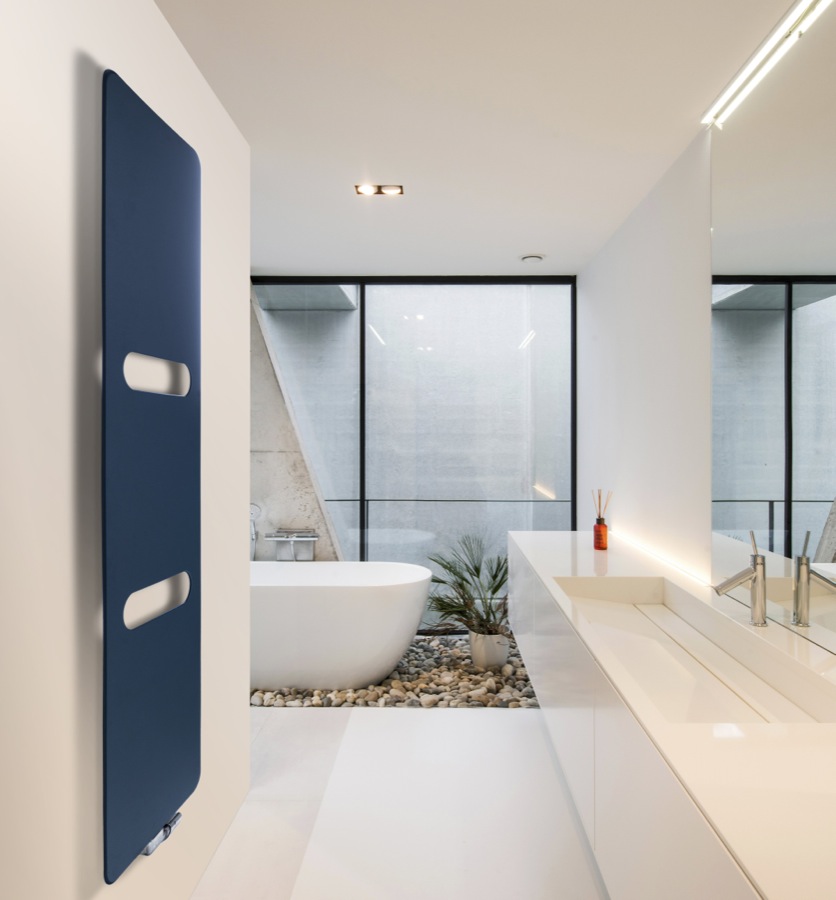
The ONI from Vasco Group uses half a litre of water and is made from aluminium, which is 100% recyclable. It is available in 50 colours and with optional cut-outs for towels
Michael Sammon of Frontline Bathrooms agrees that technology is pairing with design: “We expect to see more design-led and technology-driven models being brought to market, such as our Vetro Stone Radiator, which is fitted with an infra-red programmer and touch-screen control for easy heat management.”
Smarten up heating
So will we begin to see futuristic designs that would look more at home in a movie like Star Wars? Only time will tell. But innovation breeds innovation, so technological strides will only serve to widen the imagination.
With the growing interest in connectivity in the home, will this then see a change to radiator and towel warmer design?
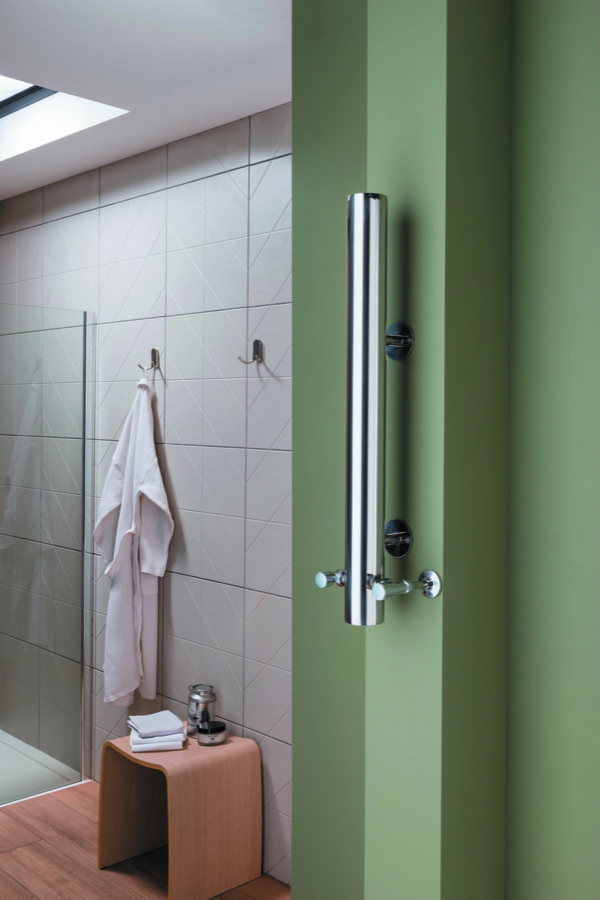
Manufactured from stainless steel, the R70 Towel Warmer from Aestus can be fitted vertically or horizontally and comes in a choice of four heights. It is available in polished and brushed stainless steel, with a sealed electric version also available
Alex Bradley of MHS Radiators does not see smart heating controls causing a drastic overhaul: “The connected home is a broad subject and, when it comes to central heating, there are a wide number of approaches.
“Essentially, we see little changing in the design of radiators themselves. However, there might be increased demand for ‘smart’ TRVs that provide form and function, as existing forms of this technology don’t currently consider aesthetics.”
Quality and value
Arguably one of the greatest concerns for designers is to educate their clients on the value of the products they are purchasing.
For Ellie Sawdy, it’s all about the quality of materials: “There is no point watching the pennies and purchasing a radiator which will rust in a few short years. Investing in quality, long-lasting, sturdy materials will make all the difference in the long-term.”

Hudson Reed’s Brampton floor-mounted radiator and towel warmer combines period design of a column radiator with a modern towel rail aesthetic. It provides a heat output of 2153 BTU and there is also a wall-mounted version available
All too often, consumers may opt for the cheap alternative, in spite of its effect on the surrounding aesthetics, something that Alex Bradley bemoans: “A poor quality or ‘basic’ model can often draw attention in the wrong way and detract from a new bathroom scheme.”
And Bradley reminds designers that the smallest details can be the most important, as he adds: “We often see designs that include fantastic radiator or towel rails in a special finish, which are then fitted with ‘run of the mill’ valves. Specifying complementary valve sets can greatly enhance the overall image, and make a huge difference to an installation.”
Accomplished kitchen and bathroom designers will be aware it’s important to highlight to consumers the significance of what a radiator or towel warmer purchase means to the overall design. They suggest that, armed with all the information, consumers will make the right decision for themselves.

Finished in Black Anthracite, Pure Bathroom Collection‘s Clarissa Radiator has been designed for smaller bathrooms. The vertical model measures 1800mm high x 290mm or 430mm wide and is also available in chrome
Certainly, the market is heating up for alternatives to the chrome ladder-rail towel warmer, and with greater emphasis on offering a wider variety of heating, there is a model to suit all projects.
Growing in tandem with the focus on interior fashion, combined with high tech, consumers are paying greater interest to the heating sector.
Sales director of Vogue UK Steve Birch points out: “Manufacturers have created a ‘desirability factor’ through a combination of unique designs and marketing initiatives, which has ensured there is more consumer awareness of luxury designer radiators and towel warmers in general.”
So, capitalise on this growing interest for red hot alternatives to traditional chrome towel rails.
Want to see more features like this? Read our recent overview of the importance of cabinetry to bathrooms, or take a look at our exploration of hypernature: is it a trend or a fad?
